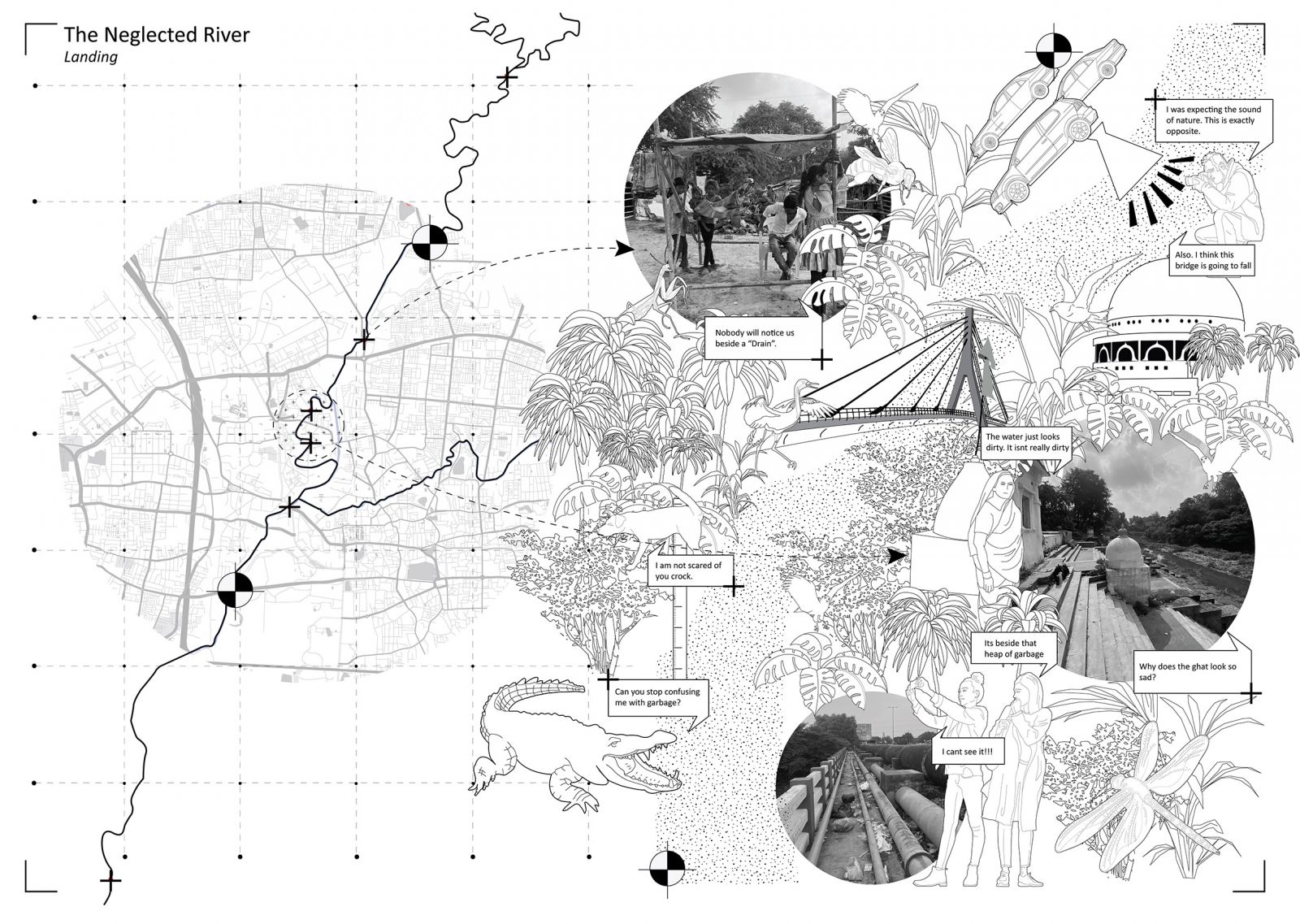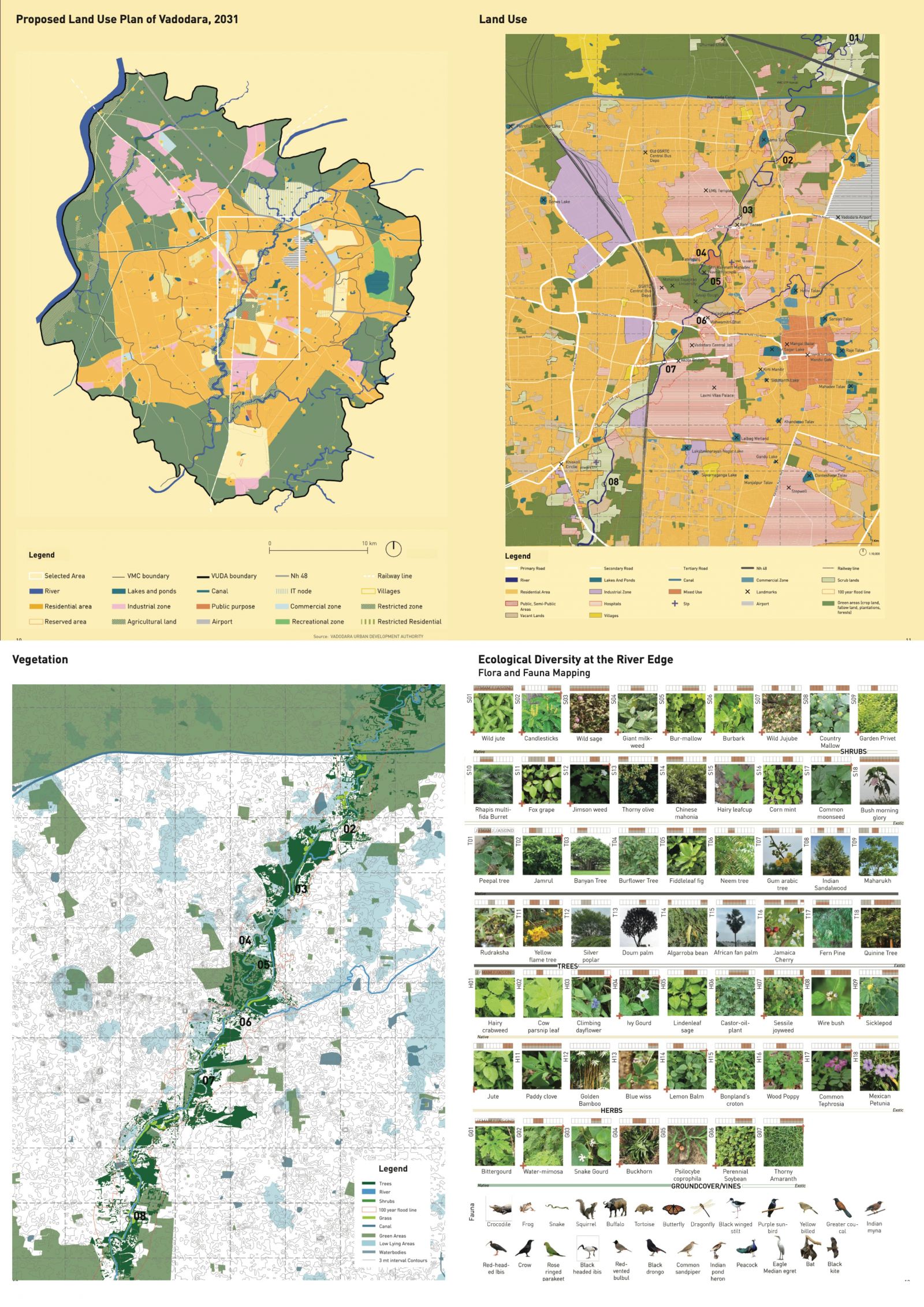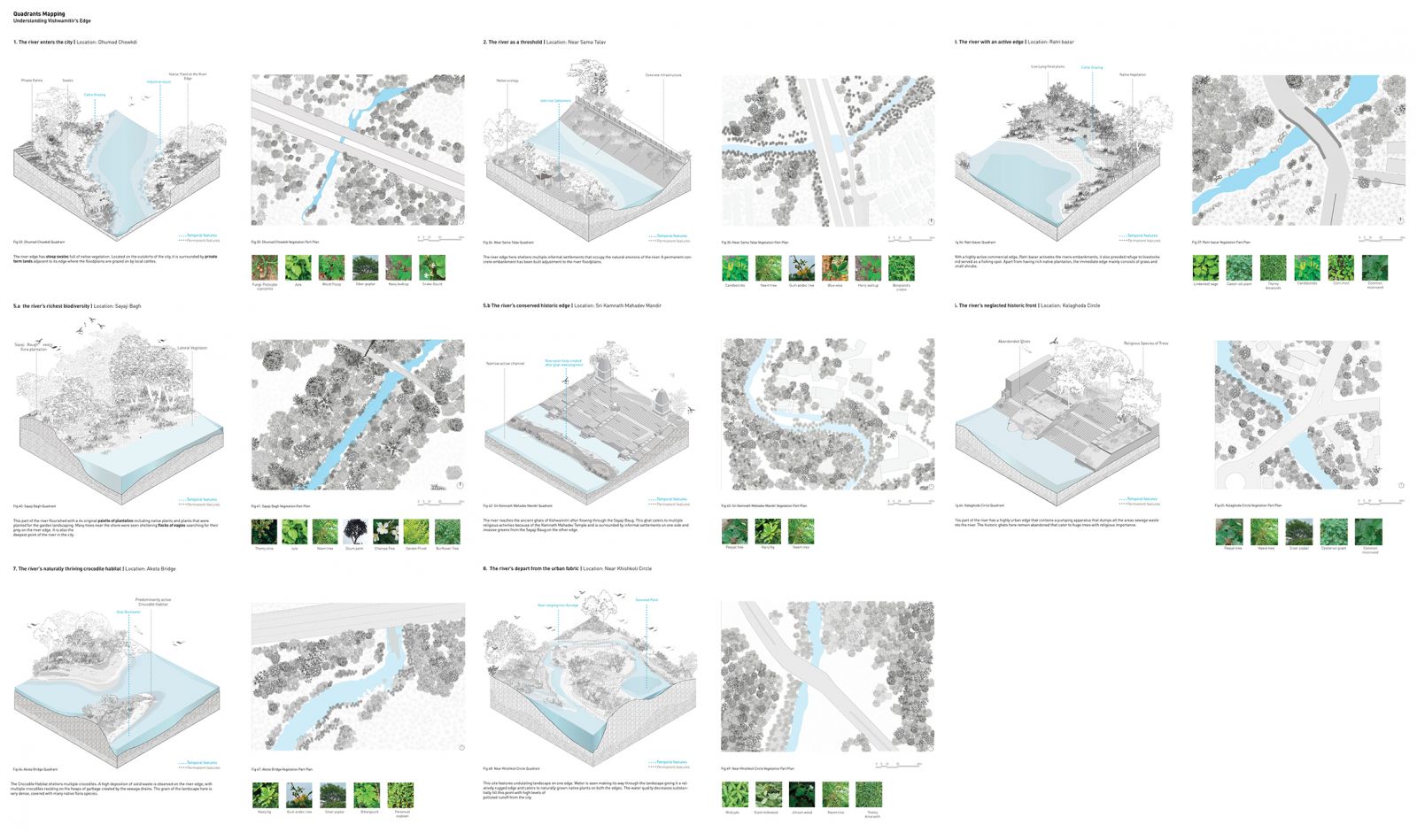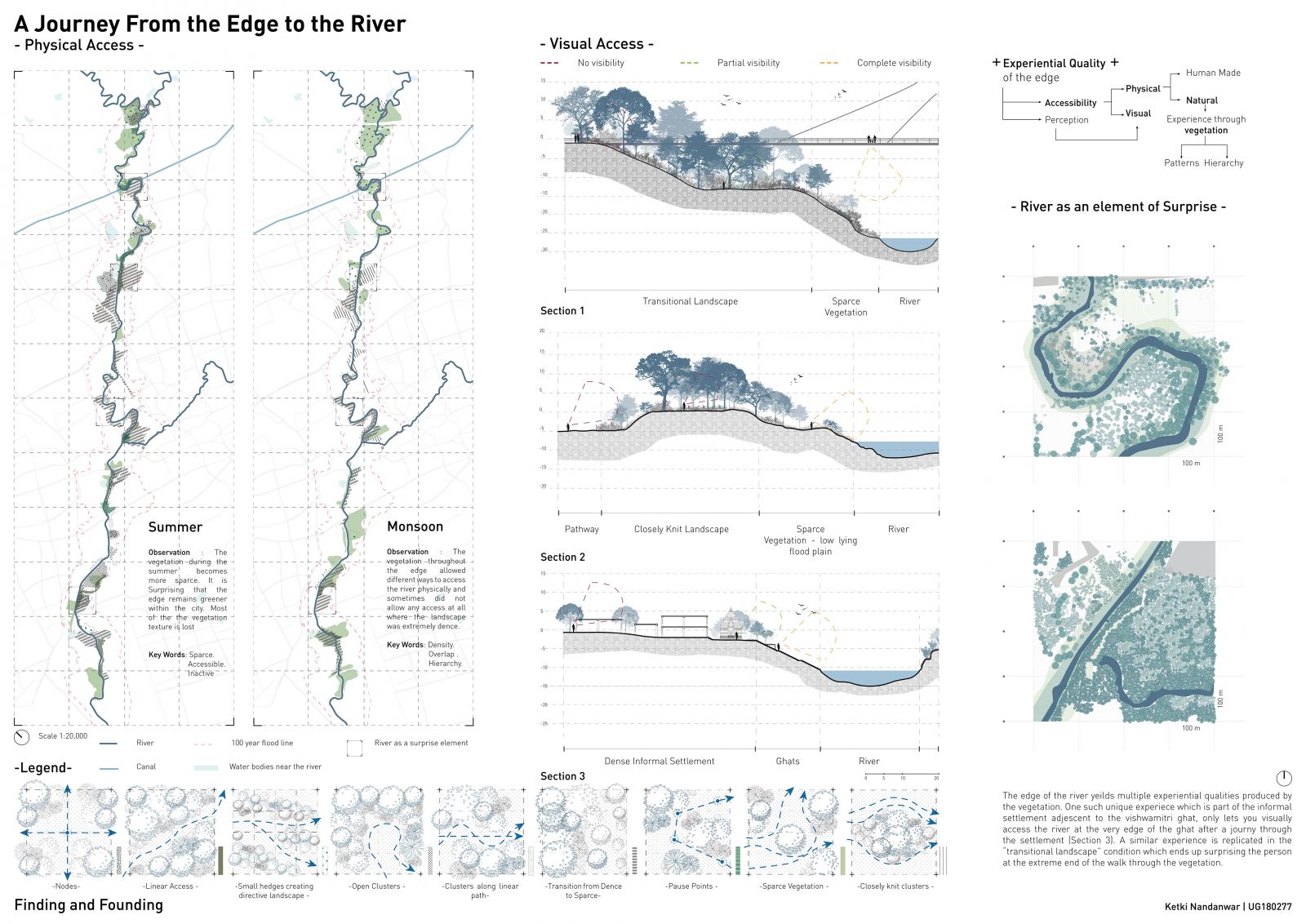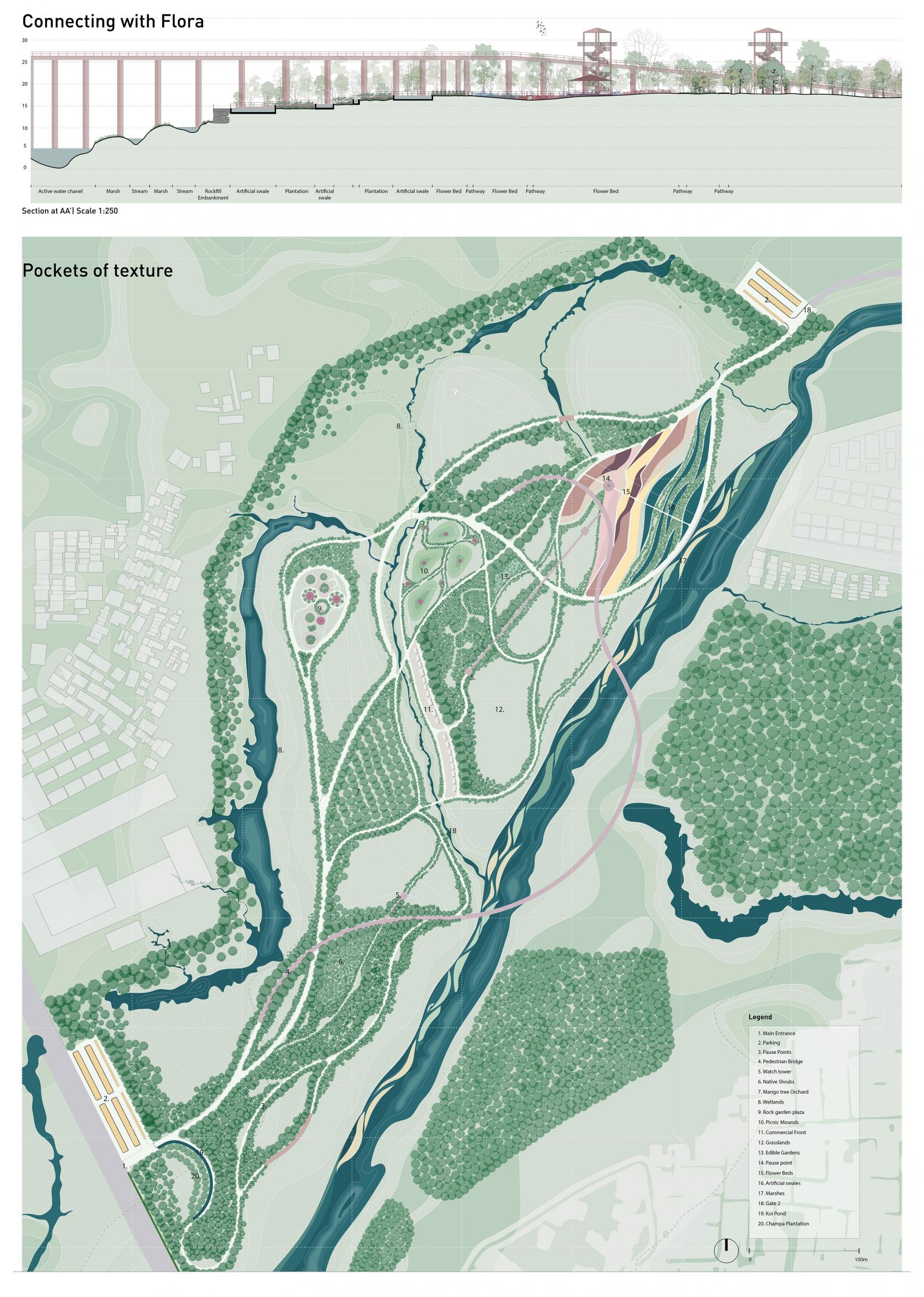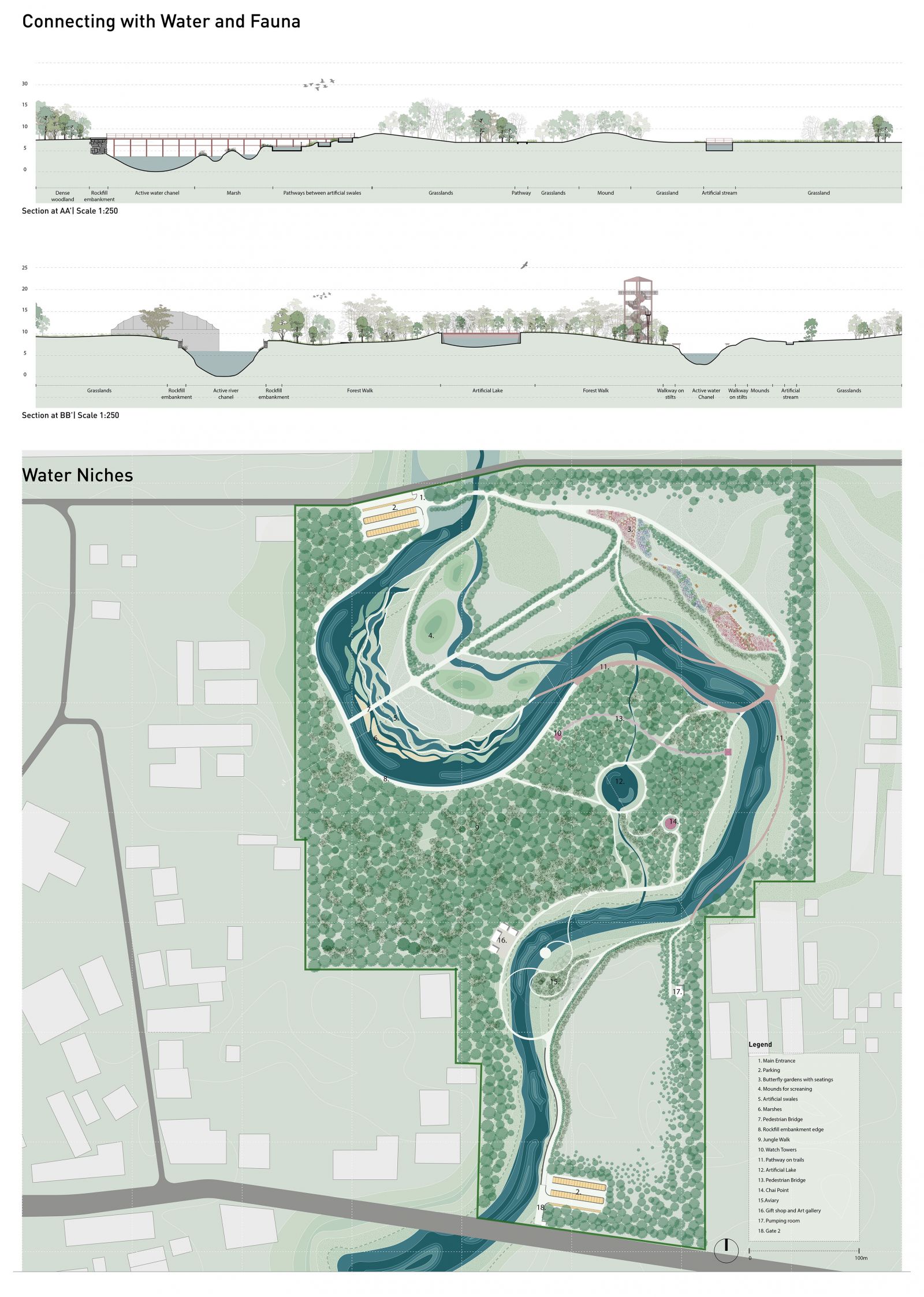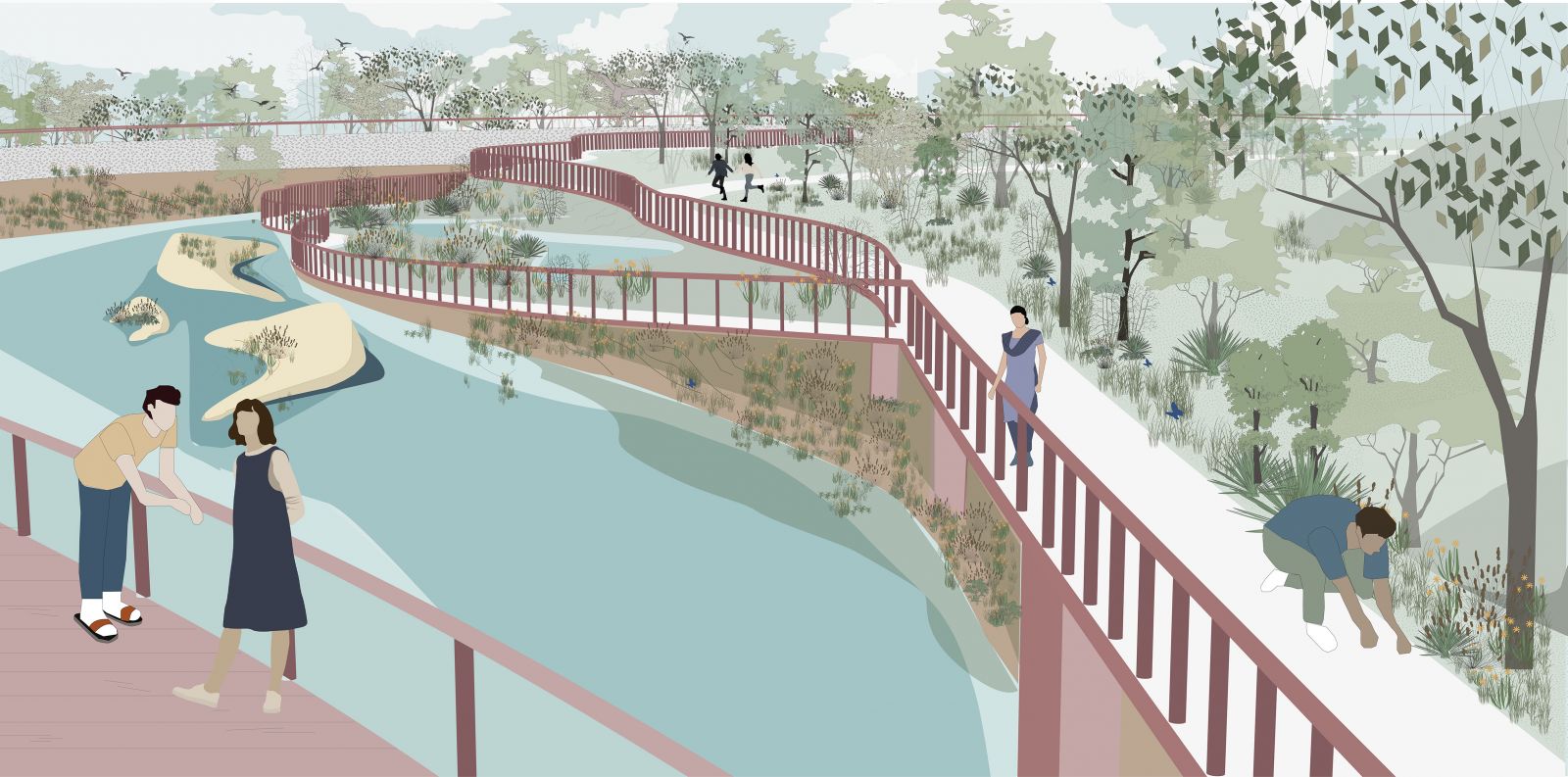Your browser is out-of-date!
For a richer surfing experience on our website, please update your browser. Update my browser now!
For a richer surfing experience on our website, please update your browser. Update my browser now!
Vishwamitri river is one of the main features of Baroda. Although
it cuts the city through its centre, the river remains neglected by its
citizens. It is confused by the people to be a drain instead. This has
happened because of the way the river has been treated by the city for
years, dumping most of its sewage in it. The edge of the river can be
recognised by the untouched greens adjacent to the river. Even though
the water of the river is extremely polluted, the edge has managed to
maintain a very strong ecosystem.
The project aims to enhance the now-neglected river
and restore its identity by increasing human interaction on the edge. It
does this by connecting the people of the city to the three elements that
make up the ecosystem - the flora, fauna and water. The intervention
aims to achieve this by retaining the vibrant experiential quality of the
vegetation patterns along the river edge.
